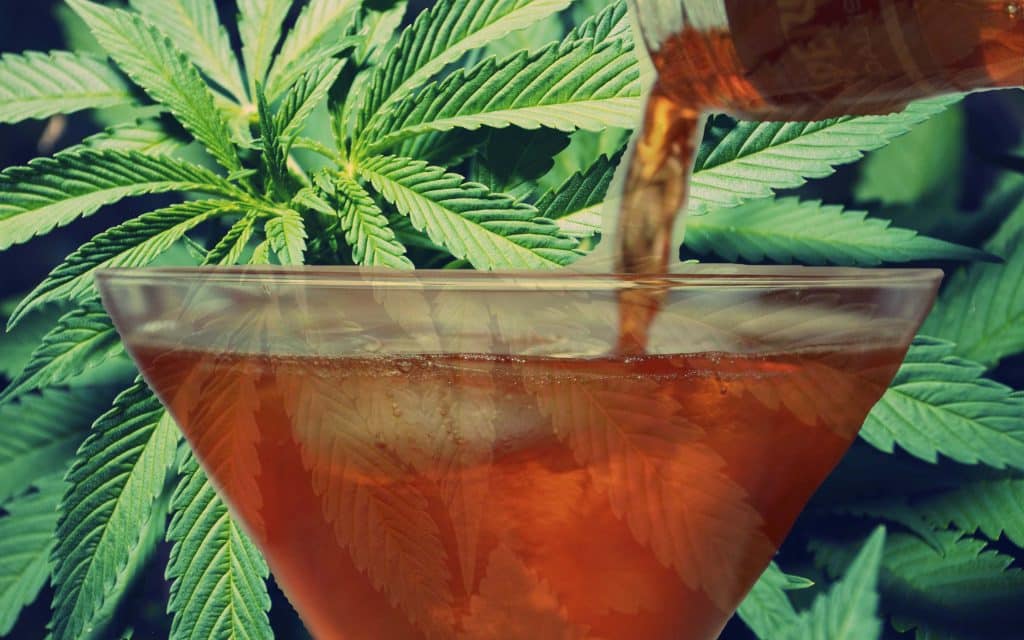Blog
The Joint Effect: Unraveling the Relationship Between Cannabis and Alcohol
Cannabis and alcohol are two widely consumed substances that have been intertwined in social and cultural contexts for centuries. With the growing acceptance and legalization of cannabis in various parts of the world, there is a renewed interest in understanding the relationship between cannabis and alcohol. In this article, we will delve into the joint effect of these substances, exploring their interactions, potential risks, and the emerging trends surrounding their combined use. By unraveling the complex dynamics between cannabis and alcohol, we can gain insights into how these substances impact our experiences and make informed decisions.
The Combination: Cannabis and Alcohol – A Mixed Bag
When it comes to combining cannabis and alcohol, the effects can indeed be a mixed bag, with substantial variations from person to person. This variability can be attributed to several factors that influence the body’s response to the combination. One crucial aspect is the dosage and potency of both substances. Different levels of THC (the psychoactive compound in cannabis) and alcohol content can significantly impact the overall experience. Additionally, the timing of consumption plays a role. Consuming cannabis and alcohol simultaneously versus spacing them out can lead to different effects due to the timing of their peak concentrations in the body.
Another crucial factor is individual tolerance. Each person has a unique physiological makeup, and their body’s response to cannabis and alcohol can vary greatly. Some individuals may have a higher tolerance for one substance over the other, affecting how they perceive the combined effects. Moreover, the interplay between cannabis and alcohol on the body’s physiological and psychological responses is complex. The substances can potentially interact in ways that intensify or alter the effects of each other. For instance, the sedative effects of alcohol might be augmented by the relaxing properties of certain cannabis strains.
Psychological factors also come into play. The mindset and expectations of an individual can influence their experience with the combination. Some may anticipate a certain outcome based on prior experiences or cultural perceptions, which can shape their subjective experience of the combined effects.
It is important to recognize that the mixed outcomes of combining cannabis and alcohol can range from positive to negative, and they may not be consistent for everyone. While some individuals report heightened euphoria and relaxation, others may experience increased impairment and cognitive effects. These differences highlight the need for responsible and mindful consumption, as well as understanding one’s tolerance and reactions to the combination. By considering dosage, timing, individual tolerance, and being aware of the potential interplay between cannabis and alcohol, individuals can make informed choices and better navigate the mixed bag of effects that can arise from combining these substances.
Health and Safety Considerations: Navigating Potential Risks
Combining cannabis and alcohol introduces significant health and safety considerations that should not be taken lightly. The synergistic effects of these substances can lead to increased impairment, impaired judgment, and a higher risk of accidents and adverse reactions. Responsible use is crucial when considering the combined consumption of cannabis and alcohol. Understanding individual tolerance levels becomes essential, as the effects can vary widely from person to person. It is essential to be mindful of the potential interactions between cannabis and alcohol and their impact on liver function and cardiovascular health. Both cannabis and alcohol can affect liver enzymes, and combining them may intensify the stress on the liver. Additionally, co-use may pose risks for individuals with pre-existing cardiovascular conditions. Vulnerable populations, such as pregnant women, individuals with mental health conditions, or those taking certain medications, should exercise extra caution, as the interactions between cannabis and alcohol can have detrimental effects on their well-being. Navigating the potential risks of combining cannabis and alcohol requires moderation, responsible decision-making, and being aware of individual limits and sensitivities. Prioritizing health, safety, and informed choices is essential to minimize potential harm and ensure a positive and responsible consumption experience.
Emerging Trends: Cannabis-Infused Beverages and Hybrid Products
As the cannabis market continues to evolve, a notable trend that has gained significant attention is the emergence of cannabis-infused beverages and hybrid products. These innovative offerings provide consumers with a unique blend of cannabis and alcohol or mimic the flavors and effects of traditional alcoholic beverages using cannabis compounds. The popularity of cannabis-infused beverages stems from their potential to offer a discreet and socially acceptable way to consume cannabis, particularly for those who may not prefer smoking or vaping. These products come in a variety of forms, including ready-to-drink beverages, mixers, and infused shots, offering consumers a range of options to suit their preferences.
The potential impact of cannabis-infused beverages on the market is significant. They represent a novel way to experience cannabis, opening up new possibilities for both recreational and medicinal use. Cannabis compounds, such as THC and CBD, can be carefully formulated and dosed in these beverages, allowing for precise control over the desired effects. This aspect appeals to consumers who seek a predictable and consistent cannabis experience.
However, the regulatory landscape surrounding cannabis-infused beverages varies across different jurisdictions. The legalization and regulation of these products differ from country to country and even state to state. Manufacturers and consumers must navigate the legal framework and adhere to regulatory guidelines to ensure compliance and safety.
Consumer experiences and preferences play a pivotal role in shaping the evolving market segment of cannabis-infused beverages. Market research indicates that factors such as taste, onset time, duration of effects, and the ability to control dosing are key considerations for consumers. Manufacturers strive to meet these preferences by developing a diverse range of flavor profiles, formulations, and potency options to cater to a wide spectrum of tastes and preferences.
As the popularity of cannabis-infused beverages continues to rise, it is important to consider the responsible consumption of these products. Consumers are encouraged to start with low doses and wait for the effects to take hold before consuming more. Education and awareness campaigns are crucial in promoting responsible consumption practices and ensuring that consumers have access to accurate information regarding the effects and potential risks associated with these products.
The emergence of cannabis-infused beverages and hybrid products is reshaping the cannabis market by offering a unique blend of cannabis and alcohol or replicating the flavors and effects of traditional alcoholic beverages using cannabis compounds. The popularity and potential impact of these innovations are driven by consumer preferences for discreet consumption methods and the desire for a predictable and enjoyable cannabis experience. Navigating the regulatory landscape and promoting responsible consumption practices are key considerations as the market for cannabis-infused beverages continues to evolve.
Personal Preferences and Responsible Choices
When it comes to combining cannabis and alcohol, personal preferences and responsible choices are paramount. Each individual’s decision to engage in this combination is influenced by a multitude of factors, including their preferences, cultural norms, and personal experiences. However, making informed and responsible choices is crucial to ensure a safe and enjoyable experience. It is essential to consider factors such as personal health conditions and sensitivities, as well as the legality of cannabis and alcohol consumption in your region. Understanding the potential risks and interactions associated with combined use is vital in making responsible decisions. It is advisable to start with low doses, pace consumption, and be mindful of the effects of both substances. Being aware of one’s tolerance and setting limits is essential in maintaining control and avoiding overconsumption. Harm reduction strategies such as having a designated sober companion, using public transportation, or refraining from operating heavy machinery should be implemented. Additionally, seeking further information and support from reputable sources, such as healthcare professionals, substance abuse helplines, or educational resources, can provide valuable guidance. By prioritizing personal preferences and making responsible choices, individuals can ensure a safer and more enjoyable experience when combining cannabis and alcohol.
Navigating the Joint Effect
The relationship between cannabis and alcohol is multifaceted and can yield varied experiences and outcomes. While the combined use of these substances is a personal choice, it is essential to approach it with awareness, moderation, and responsible decision-making. Understanding the potential risks, interactions, and individual factors that influence the joint effect of cannabis and alcohol can empower individuals to make informed choices that align with their well-being and safety. By unraveling the complexities of this relationship, we can navigate the joint effect of cannabis and alcohol more mindfully and responsibly, enhancing our overall experiences and minimizing potential risks.


